The Standing Grand: The future of the grand piano is lightweight, portable & standing upright
Sarah Nicolls is building a lightweight & portable acoustic grand piano based upon her innovative “Inside-Out Piano” and is looking for people to get involved in this unique project via Kickstarter.
The Standing Grand
Sarah is a pioneering pianist and performer who does interesting things with her instrument. She found that composers were increasingly asking her to play “inside” the piano, to pluck strings and fiddled about with the internals. That’s very interesting musically but it’s actually quite hard to access the strings in a grand piano and in performance all that creativity was completely invisible. Electronic modular performers have some of the same challenges. So, Sarah designed a piano that went up vertically from the keys so that the entire body was accessible to her and visible to the audience. This evolved into the “Inside-Out Piano” that she’s been performing with since 2014. Although this solved all the sonic and performance issues it was still an enormous and heavy grand piano that was difficult to move or transport. This is what Sarah is now turning her attention to.
She has started a company called “Future Piano” in order to design and build a new kind of grand piano. The idea is to build the sound of a grand piano into the space of an upright and to use modern materials to make it as lightweight and portable as possible without sacrificing that all-important sound.
They have a design from Keechdesign UK that encapsulates the concept. It will weigh only 82kgs which is less than an upright piano. The strings are straight strung for the fullest sound, the dampers and hammers go behind the strings giving full access to the strings from the front. The sound is then projected straight at you which must be quite astonishing considered where you normally sit in relation to the strings on a grand piano.
Future Piano has launched a Kickstarter campaign in order to raise the funds it needs to finance the building of the first piano. It’s a little unusual in that they are not as yet offering the piano itself as a product you can buy. In the video Sarah does suggest that this could become an affordable grand piano in terms of cost and space for anyone and so there’s definitely an intention there to make The Standing Grand available. The campaign is asking purely for your donations. Some of the perks include downloads of Sarah’s music, private concerts, your name on a key, workshops all the way up to putting your logo on the piano. They need to raise £40,000 which is no small feat for something this niche.
I think it is a glorious concept and an exciting project for anyone who has dreamed about owning a grand piano. It’s also about being part of something revolutionary, something creative and revolutionary. That’s got to be worth a tenner. For fifty quid you can be invited to a one-off private concert – that’s a decent price for any concert these days. Let’s hope that the next couple of months the project will attract enough attention to find itself funded.
More information
Video
You are currently viewing a placeholder content from Vimeo. To access the actual content, click the button below. Please note that doing so will share data with third-party providers.
5 responses to “The Standing Grand: The future of the grand piano is lightweight, portable & standing upright”
You are currently viewing a placeholder content from Facebook. To access the actual content, click the button below. Please note that doing so will share data with third-party providers.
More InformationYou are currently viewing a placeholder content from Instagram. To access the actual content, click the button below. Please note that doing so will share data with third-party providers.
More InformationYou are currently viewing a placeholder content from X. To access the actual content, click the button below. Please note that doing so will share data with third-party providers.
More Information
 4,0 / 5,0 |
4,0 / 5,0 | 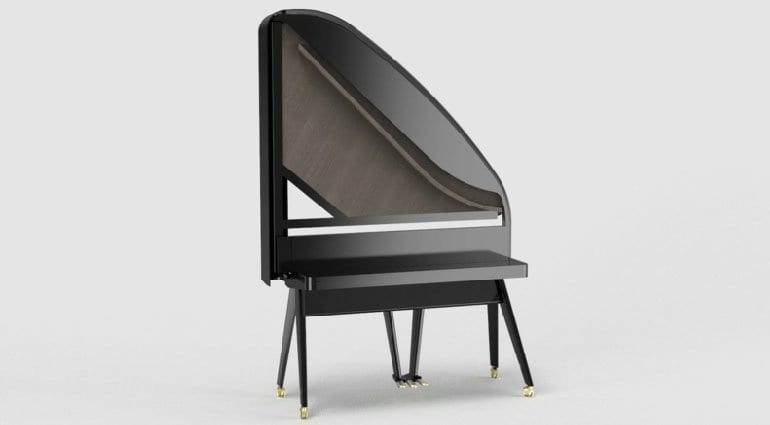
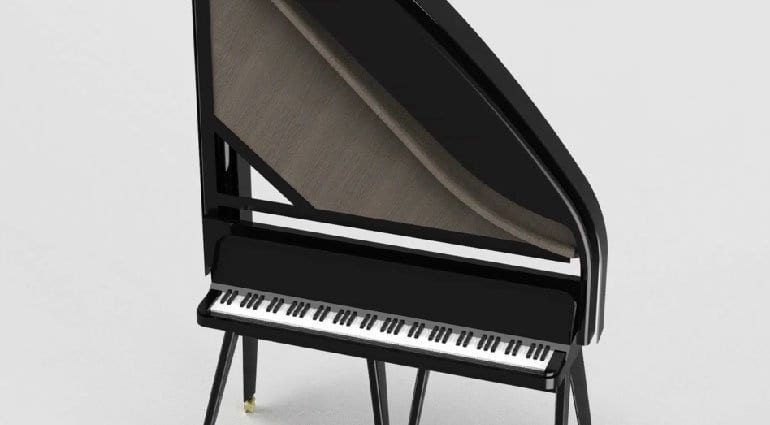


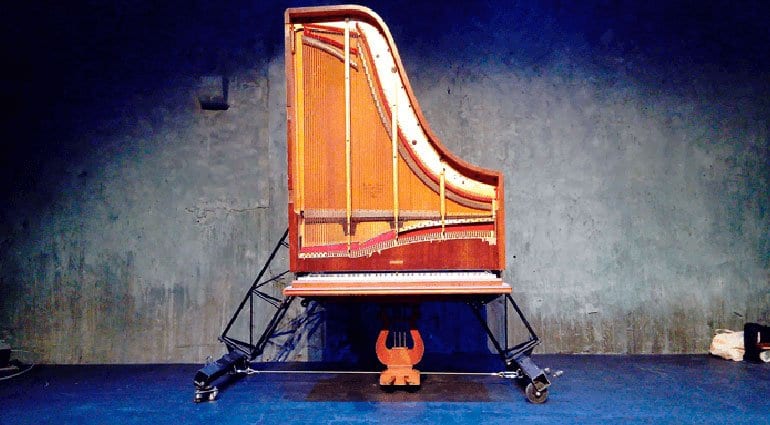
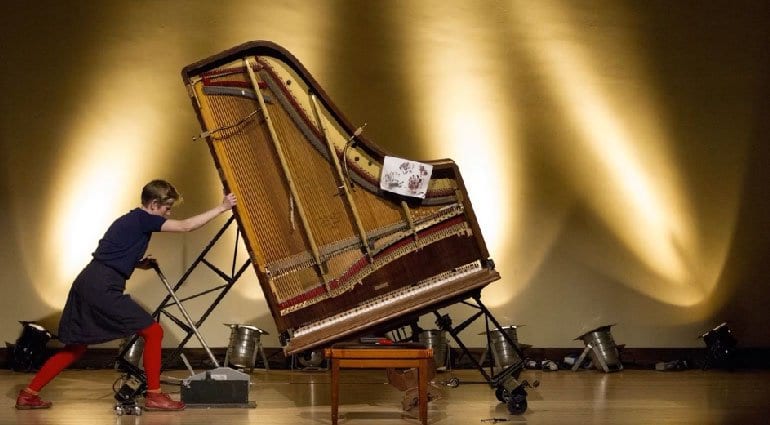
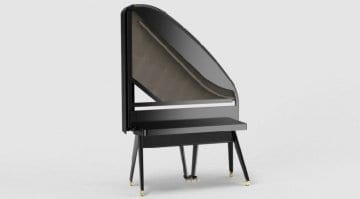

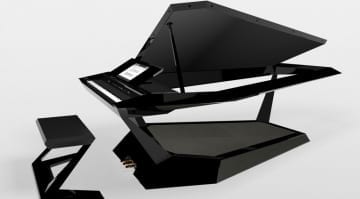
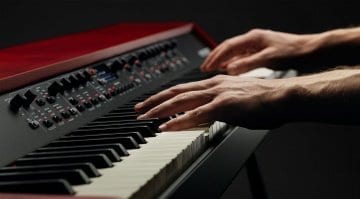
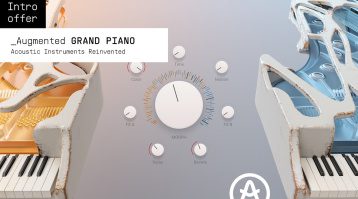

In the 19th century there were several upright grands of this style, generically called ‘giraffe pianos’, – for obvious reasons. Heavy things though, so I’m curious how they hope to get down to 82kgs without the aid of electronics.
Judging the dimensions from the image, this instrument would stand nearly 9 feet tall and GO RIGHT THROUGH THE CEILING in almost any domestic room in a normal house or home!!!! This dumb woman designer hasn’t thought things through at all. The upright piano (with its heavy iron frame starting down near ground level, rather than starting 3 feet up in the air, extending upwards, with all that top-heavy weight balanced above spindly thin legs) is already a fully evolved product that time has proved works perfectly. No need to re-invent the wheel.
Join the discussion…Any new idea for advancing piano design is very welcome, and new materials and analysis tools enable problems experienced in the past to be overcome. This is one bold venture among those of, for example, Stuart & Sons, Phoenix and Chris Maene, to take the piano in a different direction and reimagine it for both aesthetic and practical reasons. I wish this project well! (And please can we music lovers avoid prejudice in communications such as this – not impressive.)
This idea is over 100 years old. She’s late to the party. It didn’t make it then either.
It’s great to see that people like you and me are thinking about further developing the piano in terms of sound quality, overall tone, size and weight.
When using lighter materials such as carbon fibre to replace the cast iron frame, do you think it will compete in terms of stiffness for good sustain? There are surely many questions to answer. Of course, from a technicians point of view, having the action at the back of the piano can be very unpleasing to work with. But I am sure you will find a way to solve this. I am very much looking forward to reading more about your project in the future!